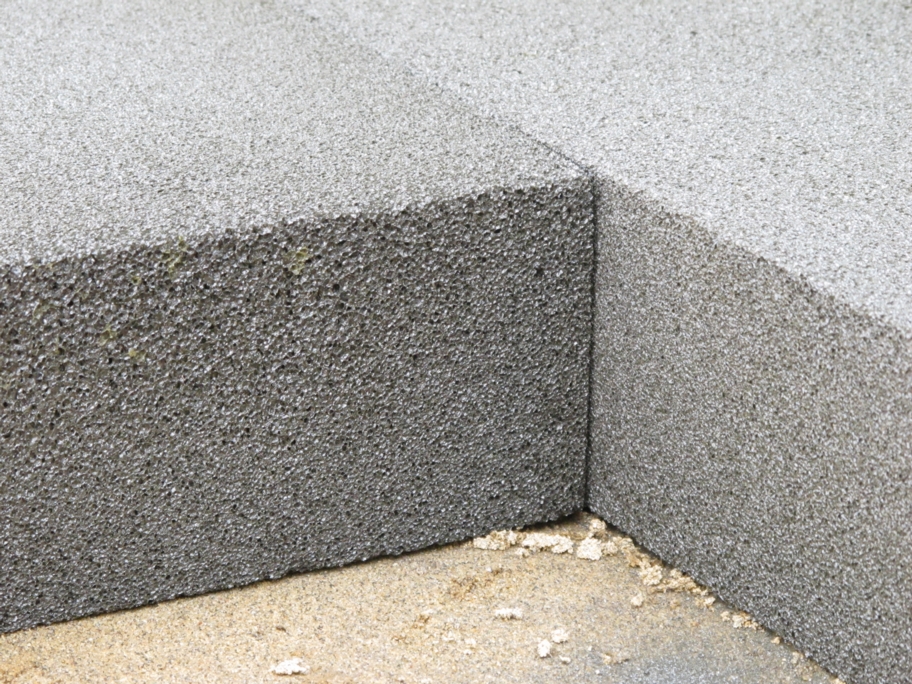This is the second part of our series covering the construction of Jersey City’s first certified passive house. You can read Part One here.
This series is a collaboration with Mowery Marsh, the architects leading this project.
In Part One, we introduced you to passive houses and the principles behind them. In this part, we visit the property to see the progress first hand. We also meet with the architects, building scientist, project manager and general contractor who provide a bit more insight into the logistics of this passive project.

At the onset of the project, the architects field measure the entire house to create plans from which to design and plan out and detail as much of the project as possible given the information they can obtain visually and given their past experience with similar structures. On this project, they decided to start demo early in the process to learn even more about the existing conditions since the project would be taken to the passive standard. Once demolition begins and the property is stripped down to the studs, the team will get a clearer picture of what currently exists in the structure and what may need to be addressed. The demolition process entails crews removing all existing fixtures and finishes including cabinets, lights, windows, doors and flooring. In some cases, period elements may be protected or salvaged and reinstalled later. The drywall and any insulation (not usually much!) is also removed. In this case, the homeowner wanted a more open layout so some existing walls were eliminated to accommodate the new design. Should they be load bearing walls, new steel beams and posts have been planned for and installed prior to removal.


On the exterior of the home, the many layers of siding were pulled off. It’s common for older homes to have several layers of siding, additions, roof patches, or other changes that affect the integrity of the building envelope. The goal is for the structure to be completely air tight, so stripping the exterior down helps identify possible troubled areas and provide a clean substrate with which to work.
Often the basement is overlooked as an area needing insulation because it’s thought that there isn’t a huge temperature threat from the ground. The earth maintains a constant temperature between 45 and 50 °F. This temperature may not seem that cold, but if you are maintaining an interior temperature of 70 °F, there will be considerable energy loss as heat will transfer to anything colder. In passive building, every degree counts so what may seem like a minor difference in temperature, needs to be addressed with proper insulation and sealing.

To address this, Brinton Brosius, general contractor on the project, begins by removing the existing 2” thick concrete basement slab. Once removed, the basement is dug out about 18” to allow for a 4” slab, 6” of new drainage and insulation. To insulate against the ground temperature, they’re using 4” thick insulation panels stacked two high. This will provide a solid 8” of insulation between the earth and the basement of the home and significantly reduce the thermal transfer. The benefit is a floor that will be warm to the touch without the need for expensive radiant floor heating.

The chosen insulation brings up another point, just because the project is passive and will ultimately be highly energy efficient doesn’t mean all the products used in the process would be considered earth friendly. The team must consider how the materials perform and their applicability to the project compared to the products long term environmental impact. For example, the insulation panels beneath the basement floor are a petroleum based product that is a contributor to green house gases. However, in this application, one could argue the thermal benefits they provide by reducing energy consumption and thus green house emissions outweighs the environmental impact of the product itself. These decisions are based on many factors and in this case the rigid insulation was selected for it’s high R-value relative to its thickness, given that the bedrock limited the available depth. Wherever feasible, the architects have specified environmentally friendly options such as dense pack cellulose insulation, which we will discuss in a later post.
While on site we met Pournamasi Rath from The Levy Partnership, who is the building scientist on the project. It’s her job to ensure the project stays on course to meet the passive benchmarks. Before construction, the proposed materials of all exterior surfaces are entered into the computer modeling to calculate the overall heat loss of the building. Given this is a rehab project, after demolition the exposed existing conditions are reviewed to confirm what has been planned for can be executed. Should there be a need for slight adjustments in material or method, the building scientist will modify the model accordingly as the project progresses and confirm the building envelope is still on target. Brian Marsh, the architect, says, “the building science is clear and finite, the methods to get there are fluid. We are constantly evaluating the construction approach, budget, and the desired outcome.” Every time a method is finalized, the building scientist can confirm the design and make any adjustment to the thermal metrics of the project to ensure they’re still meeting their benchmarks.
A lot of effort goes into the specification of the materials needed to meet the demanding thermal and sealing requirements. Fortunately for those doing this type of construction, availability of supplies has gotten easier with each project as interest in both passive and energy efficient construction continues to grow.

One of these materials is Foamglas, a lightweight, rigid material composed of millions of completely sealed glass cells. It resembles a black concrete brick in shape and size but at a fraction of the weight. Manufactured by Corning, it’s an insulating product used to insulate roofs, walls, and below-grade applications. It can even be used underneath a concrete slab.
In this case, it’s used to insulate and seal the building envelope specifically below grade. It prevents thermal bridges and leaks between building materials with differing thermal conductivity. It’s also moisture proof, fire proof and rodent/insect proof so it performs perfectly in the basement.
Next time we will discuss the new exterior sheathing and how it is sealed, as well as the different types of windows and how they are installed for a Passive House.

